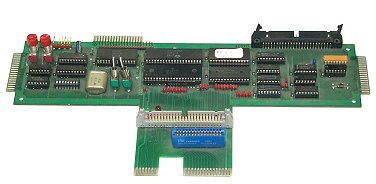
This might come as a surprise to you, but you will find information about the BlackBox on this page. I hope to add more in the future.

The BlackBox can be plugged into the back of your 600XL (if upgraded to 64kB), 800XL, 65XE (European version only), 800XE or 130XE. It provides you with the following:
Usually, the BlackBox comes with a power supply. But if you want to or need to use a diffenent power supply, you'll need the pinouts of the power connector on the BlackBoxes board. The power connector can either have a 4 or 7 pins.
For most modern hard drives, you will also need to somehow add 'parity' to the SCSI port.
This can be done in two ways. Either order the 'parity PAL' from CSS -
US$ 15.00 - or get yourself a 74LS280 from your local electronics store
for a lot less. With the 'parity PAL' you have the advantage of being
able to solder most of the pins you need directly to the 74LS640. The
pins of the 74LS280 and the 74LS640 unfortunately don't line up as
nicely. Here's a link to the schematics for the 74LS280 upgrade. It's on Fox-1's site, which has more nice pin-out stuff.
Nowadays, the BlackBox includes the BB Enhancer, which was previously sold separately. The FloppyBoard (see below) also includes the BB Enhancer. The BB Enhancer enhances the quality of the screendump and adds the TaskMaster, a very nice sector editor that speaks both MyDOS and Sparta. It also has a formatter that speaks both MyDOS and SpartaDOS.
Also available separately is a printer spooler (64kB). Which is just a different word for printer buffer. But Bob Puff explained how to add a printer spooler to your BlackBox in Volume 3, issue 2 of Atari Classics.
One last thing you can add to a BlackBox is a FloppyBoard. Which looks like this:

The FloppyBoard enables you to add up to 4 standard (read: as used in PC's) floppy disk drive mechanisms to your Atari. These can be 5.25" as well as 3.5" mechs. Up to 1.44 meg per drive.
The FloppyBoard includes a version of the Super Archiver. This means, you can do more with a floppy drive controlled by and connected to the FloppyBoard, then you can with a normal Atari 8 bit floppy drive. But what this means exactly, I do not know. Sorry! If you know more, please let me know.
With the help of BBXFER19.COM you can read from, write to and format PC disks. As some of you might have noticed, BBXFER version 1.9 loaded really slow. I ran it through Streamliner by James Hague published in Analog Computing, the Juli/August issue from 1987. It reduced the loading time to 1/3th (in words: one third) of what it was before.
Apart from loading very slowly, BBXFER 1.9 has a couple of other short commings:
Bob once told me it would be possible to add more cards to the BlackBox the way the FloppyBoard is. This ofcourse means you'ld have to develop both the hard- and the software. And that's probably not all one could do. Look at the BBDOKU.TXT file and check out the addresses the BlackBox uses. I guess a VIA needs as many addresses as a PIA does. Heck, maybe somebody could come up with a memory upgrade. That way, one of the biggest advantages the MIO has over the Blackbox (next to the nice case and the use of 'normal' cables and connectors) - it's RAMdisk feature - would be gone. Or maybe somebody could come up with a video upgrade.
The pictures above are made by Nir Dary and Bob Puff respectively. I have permission from both guys to use these pictures.
I've made a few improvements to my BlackBox/FloppyBoard combo:
Here are some pictures I took before I made the improvements I
mention above. If you have a clue how I can get those (scanned from
photo's) as good as those of Nir and Bob, please tell me.
Here's a picture of my BlackBox/FloppyBoard combo, after the improvements.

You can clearly see the Nylon screws. You'll have to look a bit harder to see the extra precision socket I inserted between the BlackBox and the Floppyboard. If you compare the before and after photo's, you'll see that I replaced the two rows of long pins that were soldered to the FloppyBoard with a stack of sockets. The pins I removed where not all on one level. If you know how I can reduce the glare on these pictures please tell me.
For 'the other connector' I mentioned above, I used the pins you see below. I couldn't get strait pins that were long enough, so I bought these and carefully bent them till they were strait.
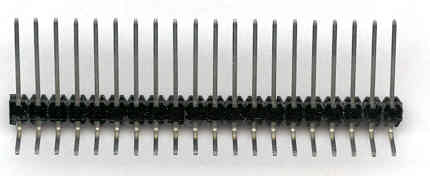
| 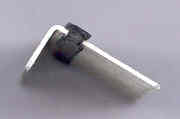
| 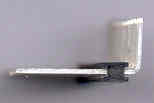 |
As many of you know and might even have experienced, some XE's and even some XL's seem to have week CPU's. The majority of these week CPU's seem to have been manufactured in Mexico. Hence the name "Mexico CPU". What seems to happen is that whenever the Phi2 clock signal (which is used as a clock signal throughout the computer) is used to much, the Phi2 signal is moved back in time just enough to cause timing problems.
Matthias Belitz has come up with a way to replace the BlackBox ROM with a FLASH ROM. Yes, you're not imagining things, I said Flash ROM.
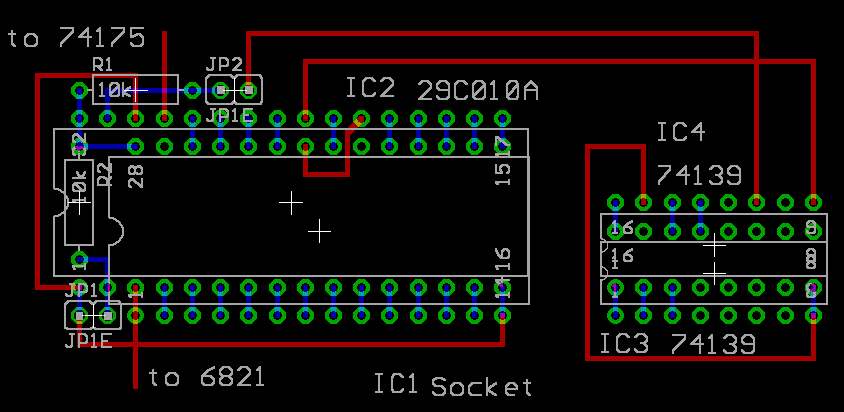
And here is the description of how to do it.
Textfile describing FlashROM upgradeYou'll need BBFL11.COM to read out the BlackBox ROM and to flash the FlashROM. Make sure you can read the files BBFL11.COM saves WITHOUT the help of the BlackBox. The BlackBox will be inoperable untill the FlashROM is flashed. Here's the latest version - 2.16 - of the BlackBox ROM - with permission of Bob Puff - in the format BBFL11.COM uses. (Read: it's ready to be flashed into the FlashROM.)
If you want to extract the ROMcode from your BlackBox for use in an EPROM, try Freddy Offenga's BBDUMP10.COM.
For now, it will only dump 16kB BB ROMs. That means standard
BlackBoxes. Blackboxes with the BlackBox Enhancer have 32kB ROMs,
BlackBoxes that came with a FloppyBoard or with a ROM version that
starts with a '2' all have 64kB ROMs. Bob Puff/CSS has been shipping all
BlackBoxes with 2.xx ROMs for a couple of years now.
The latest
version (2.16) of the BlackBox ROM will follow soon. This version can be
used in BlackBoxes with and without FloppyBoard and does include the BB
Enhancer, which includes the TaskMaster (16MB max. sector editor that
understands all DOS formats).
Here is an older version of the BB ROM: version 1.34 (16kB)
And this is an version of the BB ROM that Guus Assmann sent me: version 1.41 (16kB). I do not know the difference between the two.
And here's the "new/latest" version in a format you can use for instance in an emulator: version 2.16 (64kB)
Bernhard Pahl sent me these two pictures of his BlackBox that now has
the FlashROM upgrade. He decided to not piggy-back the chips, but to
put them all on a piece of board.

| 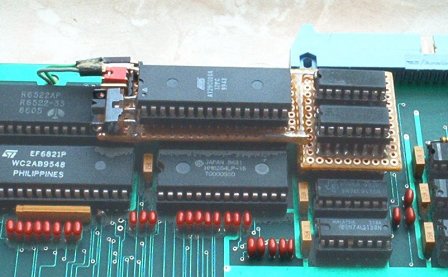
|
Bernhard Pahl also sent me his layout and his schematic for the FlashROM upgrade, which might clear up some things. Remember that Bernhard decided not to piggyback two 74LS139 together but to use an extra piece of board for those two chips.
And for those who want to know which addresses the BlackBox uses (if Matthias forgot one or two, please let me know so I can add them to the file) and how, we have BBDOKU.TXT. Or how to get to the BlackBox's menu via software (load the ENTMENU.ASM file into a text viewer and read the remarks to find out what to do).
Erhard Puetz once delved into the printer routines in the BB ROM, here is part of the code he disassembled to write this article.
As I said on my ASPI page, I was able to read sector zero of my harddrive. In this text you will find everything you've ever wanted to know about the configuration and partition data but were afraid to ask.
| Try English |
| oder Deutsch | |
| of Nederlands | of Heljes/Dörps. | ||
| Please use "Feedback from my Blackbox Page" as the subject. | |||